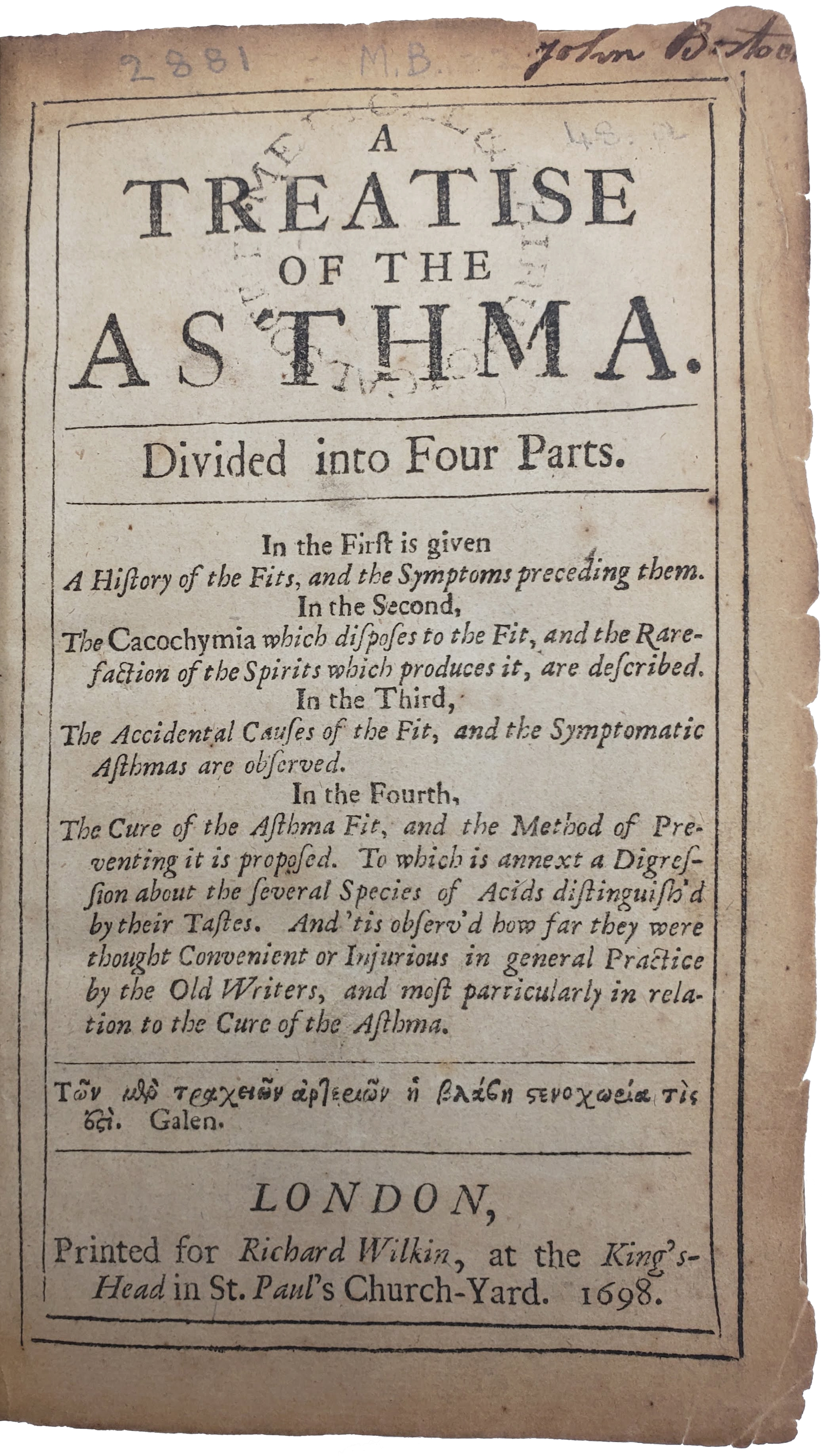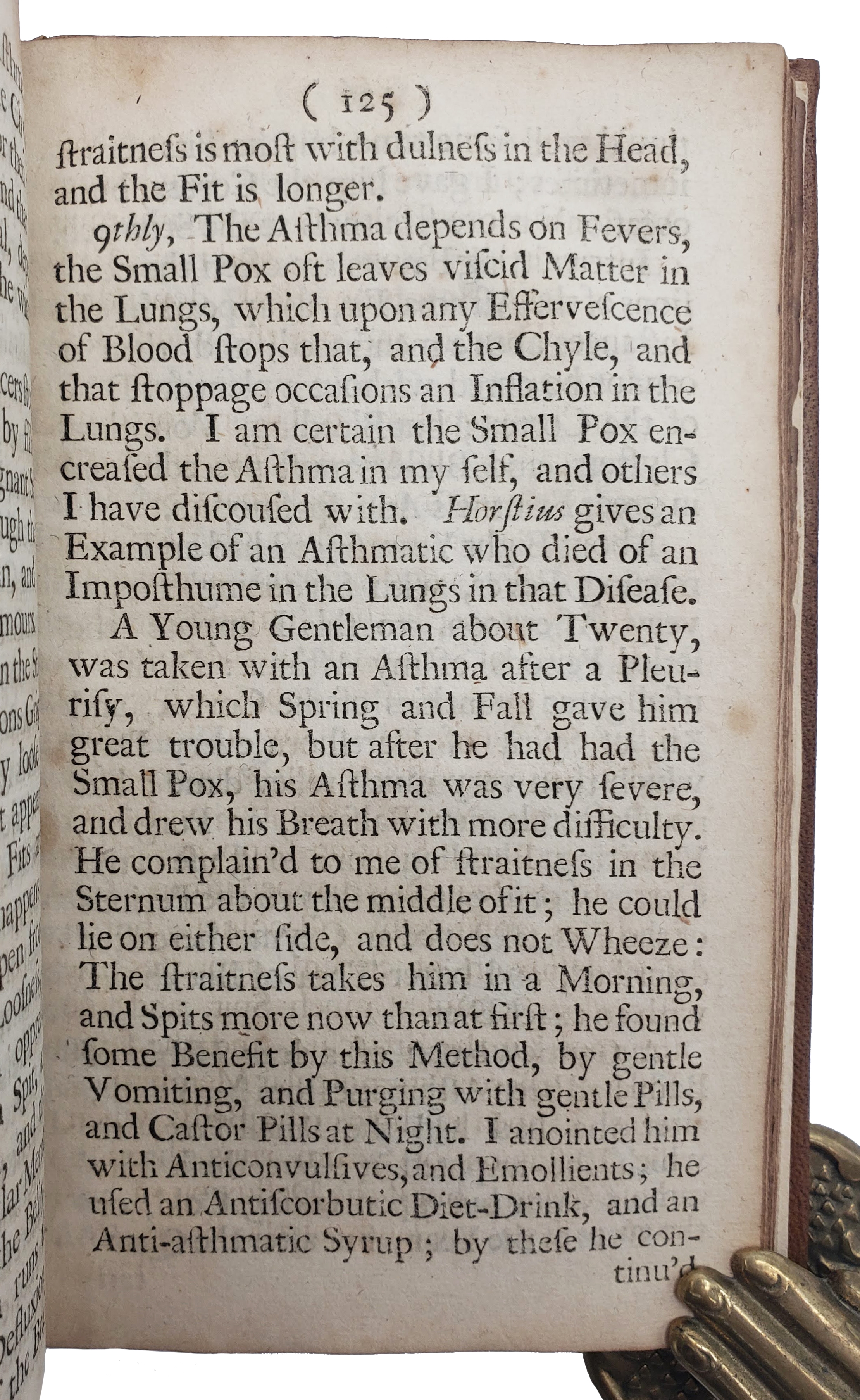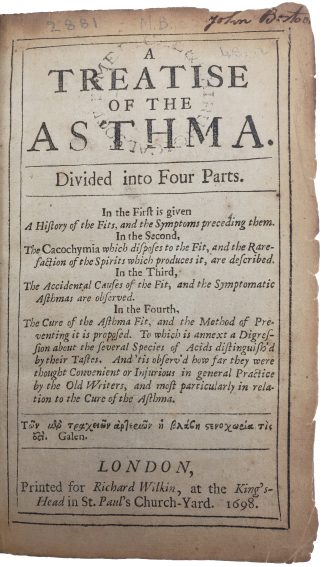FLOYER, John.
‘ADMIRABLE EARLY ACCOUNT OF EMPHYSEMA’
A Treatise of the Asthma.
London., Printed for Richard Wilkin., 1698.£2,250.00
FIRST EDITION. 8vo, pp. [34], 241-44, [4], 247, [3], 1-240, gathering R misbound. Roman letter, little Italic. Light age browning, heavier to edges, title minimally frayed, ink and other marginal marks. A good copy in modern sheep, C18 autograph ‘John Burton’ to title, faded stamp below and preceding text.
First edition of this ground-breaking study of asthma – with ‘an admirable and early account of emphysema’ (Osler) – more clearly setting asthma apart from other lung conditions. Sir John Floyer (1649-1734) was physician in Lichfield, after training at Oxford; the young Dr Johnson was taken, upon his advice, to be ‘touched’ by Queen Anne for the King’s Evil in 1714. ‘Floyer was one of the most eccentric physicians of his time, and his works show great independence of thought as well as a true spirit of research. He was perhaps the first to measure the pulse with the aid of a specially adapted watch and to attempt to establish relationships between the pulse rate and conditions of health and disease. […] In this work, he discusses the influence of heredity in asthma and includes an early description of emphysema.’ (Heirs of Hippocrates).
Remarkably, ‘Treatise’ revolves around Floyer’s long-standing asthma and his personal experience of the symptoms, dividing the condition into ‘continuous’ (as a consequence of the compression of the bronchia caused by other illnesses, such as emphysema) and ‘periodic’ (due to lung constriction caused by external agents). Written in diary form, Part I recounts the nature of asthmatic fits and the early signs leading to them, with detailed descriptions of Floyer’s own discomfort and attempted cures. It includes a Q&A section with an ‘ingenious lady’ who suffered from ‘hysteric asthma’. Part II investigates the causes of periodical fits, i.e., the reasons for the subsequent‘Effervescence in the Humours’. Whilst still attributing asthma to an imbalance of body fluids, in the Hyppocratic tradition, Floyer devotes Part III to the external causes of the fits. For instance, air alterations (e.g., seasons; damp houses; swamp vapours; London smoke from fires, as well as coal, wood and tobacco; the smell of a candle put out or of wine must, mineral fumes from alchemical experiments), exercise (which makes the asthmatic’s breath short), and emotional stress. Part IV discusses treatments, from a healthy diet to pursuing locations with clean air, the use of salfoacid digestives, and others, with recipes for natural remedies. The appendix is an account of Floyer’s autopsy of a broken-winded mare and explains the weighing of asthmatics according to their excretion of urine and phlegm before or after fits.
ESTC R6812; Krivatsy 4134; Heirs of Hippocrates 668; Osler 2614; Wellcome III, 34.In stock




